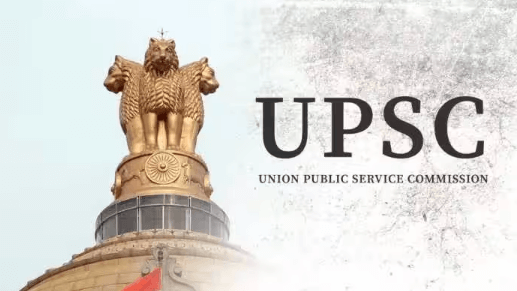Daily Current Affairs : 23-January-2025
The Reserve Bank of India (RBI) recently updated the ‘Master Direction – Reserve Bank of India (Asset Reconstruction Companies-ARCs) Directions, 2024’. These changes aim to improve transparency, protect the interests of creditors, and ensure better management of non-performing assets (NPAs).
Key Points of RBI’s Revised Master Direction
The revised norms focus on several important aspects of ARCs’ operations. Here are the key elements:
- Board-Approved Policy:
Every ARC must have a policy approved by its board. This policy should cover:- Cut-off Date: The date when eligibility for a one-time settlement is determined.
- Permissible Sacrifice: The level of sacrifice allowed for different categories when settling debts.
- Security Valuation Methodology: A method for evaluating the realizable value of secured assets.
- Settlement Process:
- Settlements should be considered only after all recovery options have been explored.
- Preferably, settlements should be in a lump sum.
- If not, non-lump sum payments should be designed based on the business model, borrower cash flows, and future earnings.
- Independent Advisory Committee (IAC):
An IAC, consisting of experts in technical, financial, or legal fields, should review all settlement proposals and advise the ARC’s board.
What are ARCs?
Overview:
An Asset Reconstruction Company (ARC) is a financial institution that purchases NPAs from banks or financial institutions and attempts to recover the debt or associated securities. The concept was introduced in the 1998 Narasimham Committee report and formalized with the SARFAESI Act, 2002.
Background:
ARCs were established under the Securitisation and Reconstruction of Financial Assets and Enforcement of Security Interest Act, 2002 (SARFAESI Act, 2002). These companies are registered under the Companies Act, 2013 and regulated by the RBI under the SARFAESI Act.
How Do ARCs Work?
ARCs are involved in several key activities to recover debts from NPAs:
- Asset Reconstruction: ARCs acquire the rights to loans, advances, bonds, guarantees, or other credit facilities from banks and financial institutions.
- Securitisation: ARCs acquire financial assets and issue security receipts to Qualified Buyers (QBs).
- Security Receipts: These receipts are issued to lenders and can be redeemed when the loans are recovered. ARCs charge management fees and share recovery gains with the original selling institutions.
Important Points:
- RBI’s Revised Master Direction: Updated guidelines for Asset Reconstruction Companies (ARCs) to improve transparency and protect creditor interests.
- Board-Approved Policy: ARCs must establish a board-approved policy for debt settlement, covering:
- Cut-off date for eligibility of one-time settlement.
- Permissible sacrifice levels for different categories.
- Methodology for evaluating the realizable value of security.
- Settlement Process:
- Settlements should occur only after exploring all recovery options.
- Preferably, settlements should be paid in a lump sum.
- Non-lump sum payments must align with business models and borrower cash flows.
- Independent Advisory Committee (IAC): An IAC, with financial, legal, or technical experts, should review settlement proposals and advise ARCs.
- Role of ARCs: ARCs buy NPAs from banks and financial institutions and try to recover debts or associated securities.
- Legal Framework: ARCs are registered under the Companies Act, 2013, and regulated by RBI under the SARFAESI Act, 2002.
- ARCs’ Operations:
- Asset Reconstruction: ARCs acquire rights to loans or other financial assets for recovery.
- Securitisation: ARCs issue security receipts to Qualified Buyers (QBs).
- Security Receipts: Receipts can be redeemed upon loan recovery, with ARCs charging management fees and sharing recovery gains.
Why In News
The Reserve Bank of India (RBI) has revised the ‘Master Direction – Reserve Bank of India (Asset Reconstruction Companies-ARCs) Directions, 2024,’ with the aim of enhancing operational efficiency, promoting transparency, and safeguarding creditor interests in the asset reconstruction process.
MCQs about RBI’s New Rules for Asset Reconstruction Companies (ARCs)
-
What is the main purpose of the RBI’s revised ‘Master Direction – Reserve Bank of India (Asset Reconstruction Companies-ARCs) Directions, 2024’?
A. To increase the number of ARCs in India
B. To enhance operational efficiency, transparency, and safeguard creditor interests
C. To lower the tax rates for ARCs
D. To introduce new financial products for ARCs
-
What must an Asset Reconstruction Company (ARC) establish according to the revised RBI guidelines?
A. A government-approved audit
B. A board-approved policy for settling borrower dues
C. A new loan product for borrowers
D. A partnership with non-bank financial companies (NBFCs)
-
According to the revised guidelines, what is the preferred method for settlement of debts by ARCs?
A. Monthly installments
B. Lump sum payment
C. Flexible payment terms without conditions
D. Deferment of payments indefinitely
-
What role does the Independent Advisory Committee (IAC) play in the settlement process for ARCs?
A. It is responsible for collecting payments from borrowers
B. It helps ARCs with investment in new financial products
C. It reviews settlement proposals and advises the ARC’s board
D. It provides legal representation to borrowers
Boost up your confidence by appearing our Weekly Current Affairs Multiple Choice Questions
![]()


